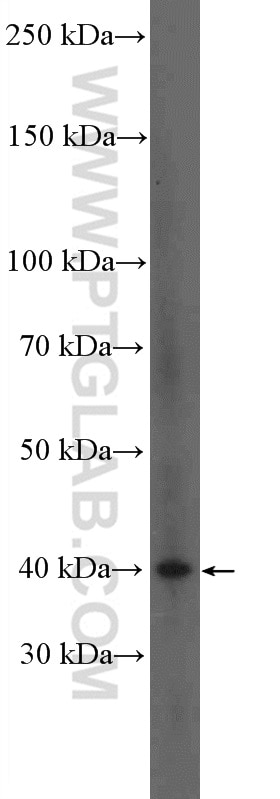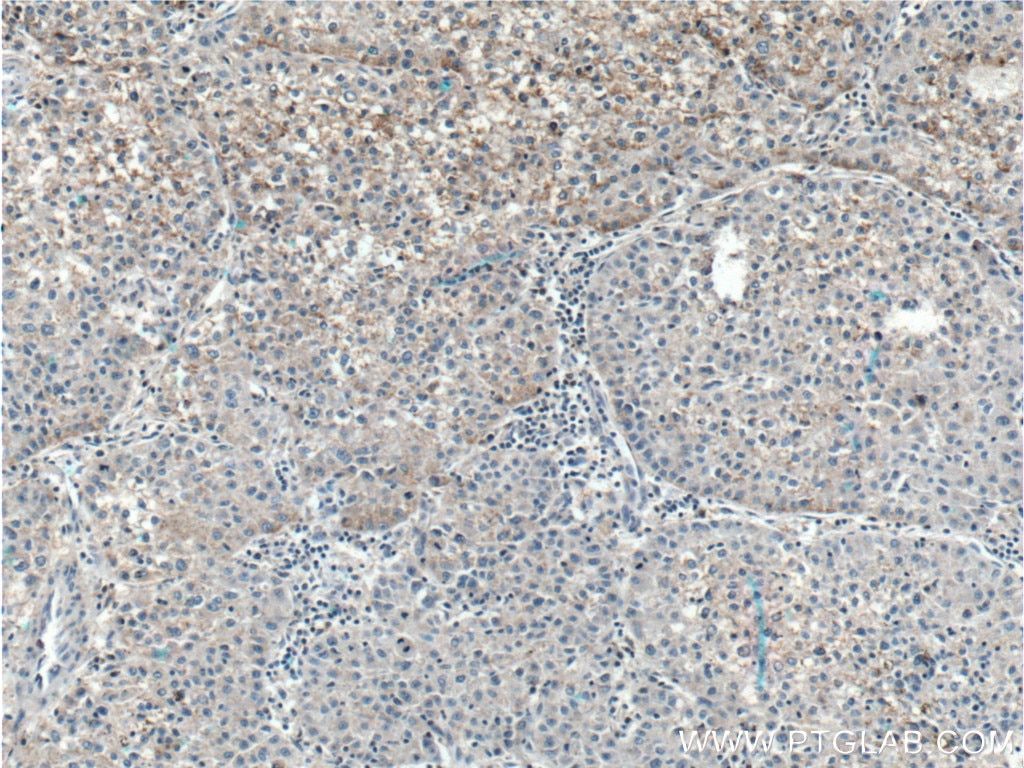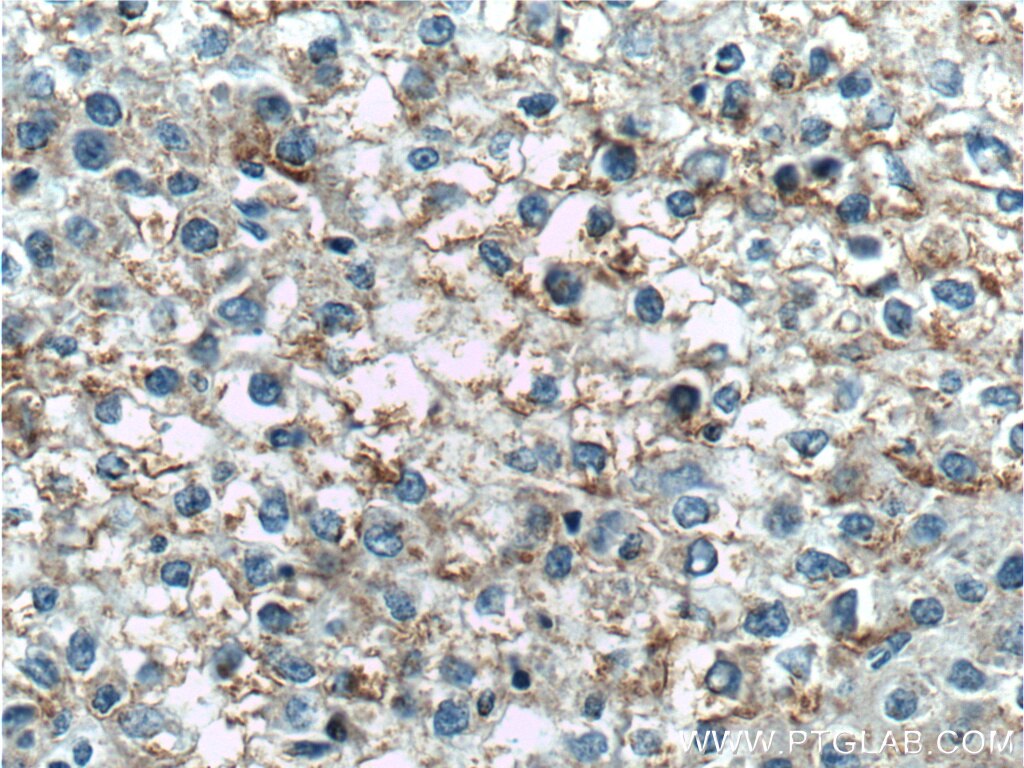Validation Data Gallery
Tested Applications
| Positive IHC detected in | human liver cancer tissue Note: suggested antigen retrieval with TE buffer pH 9.0; (*) Alternatively, antigen retrieval may be performed with citrate buffer pH 6.0 |
Recommended dilution
| Application | Dilution |
|---|---|
| Immunohistochemistry (IHC) | IHC : 1:20-1:200 |
| It is recommended that this reagent should be titrated in each testing system to obtain optimal results. | |
| Sample-dependent, Check data in validation data gallery. | |
Product Information
17852-1-AP targets TNFSF8 in IHC, ELISA applications and shows reactivity with human, mouse, rat samples.
| Tested Reactivity | human, mouse, rat |
| Host / Isotype | Rabbit / IgG |
| Class | Polyclonal |
| Type | Antibody |
| Immunogen |
CatNo: Ag12303 Product name: Recombinant human TNFSF8 protein Source: e coli.-derived, PGEX-4T Tag: GST Domain: 61-234 aa of BC093630 Sequence: VVQRTDSIPNSPDNVPLKGGNCSEDLLCILKRAPFKKSWAYLQVAKHLNKTKLSWNKDGILHGVRYQDGNLVIQFPGLYFIICQLQFLVQCPNNSVDLKLELLINKHIKKQALVTVCESGMQTKHVYQNLSQFLLDYLQVNTTISVNVDTFQYIDTSTFPLENVLSIFLYSNSD 相同性解析による交差性が予測される生物種 |
| Full Name | tumor necrosis factor (ligand) superfamily, member 8 |
| Calculated molecular weight | 234 aa, 26 kDa |
| Observed molecular weight | 35-40 kDa |
| GenBank accession number | BC093630 |
| Gene Symbol | TNFSF8 |
| Gene ID (NCBI) | 944 |
| RRID | AB_2878452 |
| Conjugate | Unconjugated |
| Form | |
| Form | Liquid |
| Purification Method | Antigen affinity purification |
| UNIPROT ID | P32971 |
| Storage Buffer | PBS with 0.02% sodium azide and 50% glycerol{{ptg:BufferTemp}}7.3 |
| Storage Conditions | Store at -20°C. Stable for one year after shipment. Aliquoting is unnecessary for -20oC storage. |
Background Information
TNFSF8, also named as CD30LG and CD153, is a member of the tumor necrosis factor (TNF) receptor superfamily, is a surface antigen used as a clinical marker for Hodgkin lymphoma and related hematologic malignancies. It induces proliferation of T-cells. CD30L enhanced the proliferation of CD3-activated T cells, but induced differential responses, including cell death, in several CD30-positive lymphoma-derived cell lines. For Glycosylation, the MW in WB detection is about 35-40 kDa.
Protocols
| Product Specific Protocols | |
|---|---|
| IHC protocol for TNFSF8 antibody 17852-1-AP | Download protocol |
| WB protocol for TNFSF8 antibody 17852-1-AP | Download protocol |
| Standard Protocols | |
|---|---|
| Click here to view our Standard Protocols |



